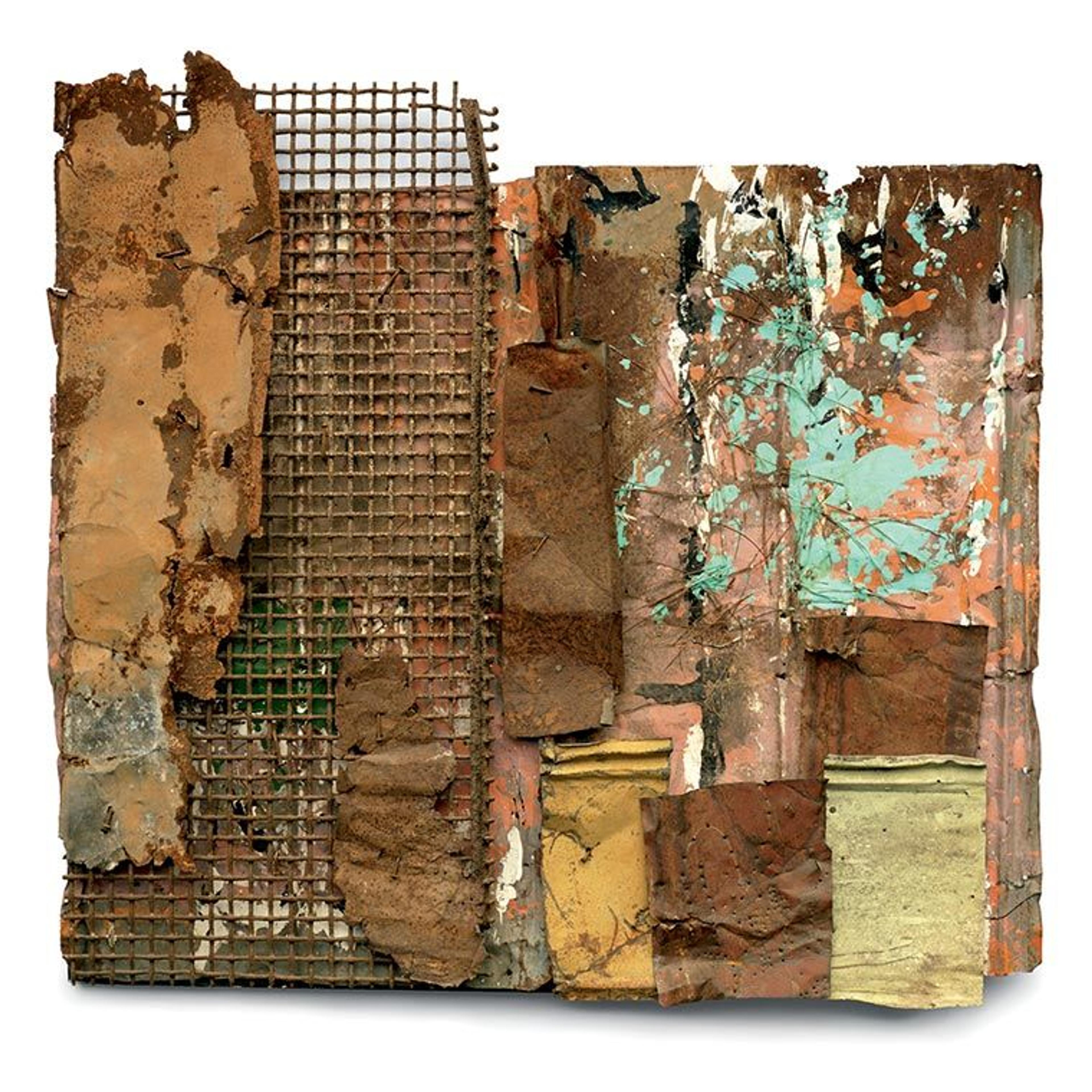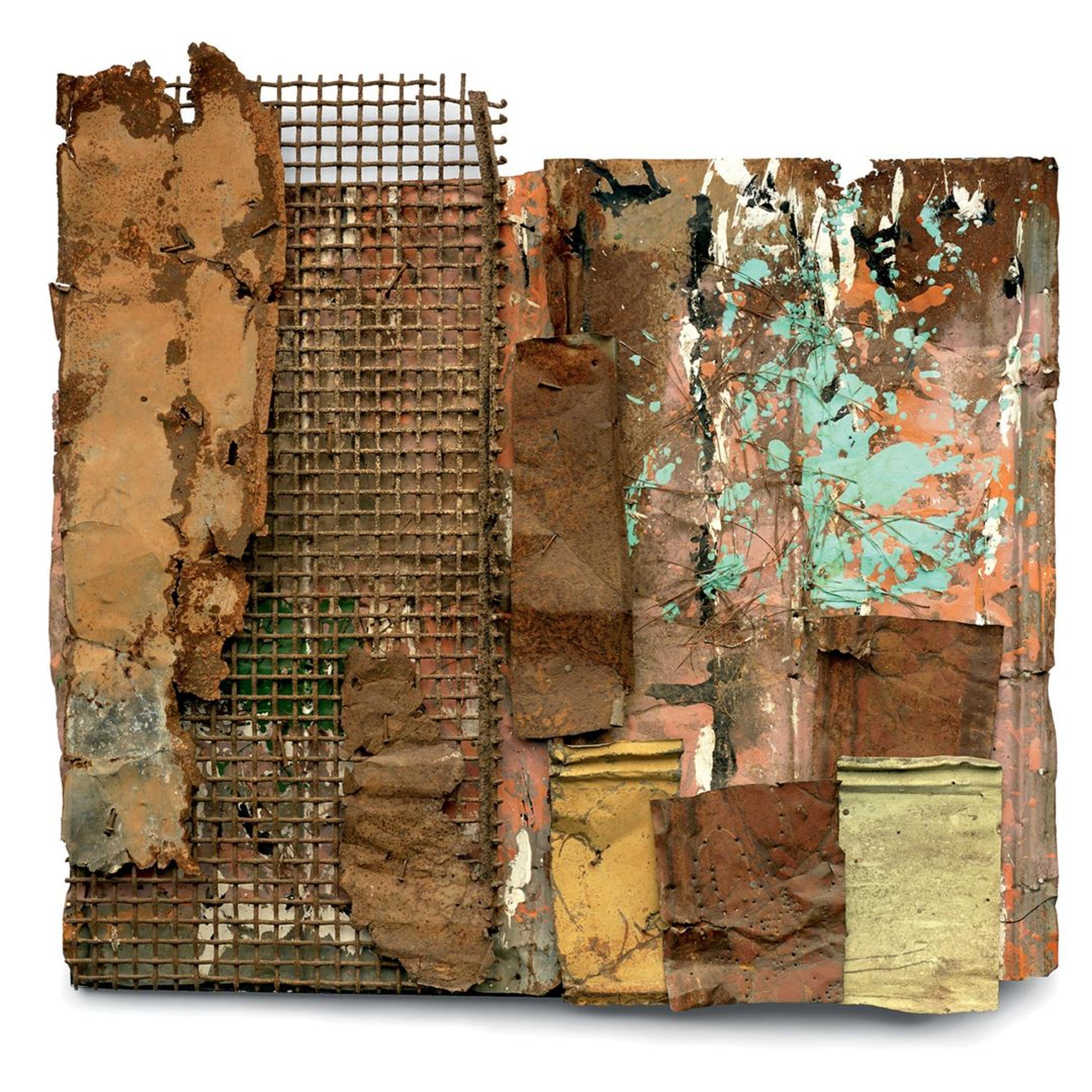
Ronald Lockett (American, 1965–1998). The Enemy Amongst Us, 1995. Commercial paint, pine needles, metal, and nails on plywood, 50 x 53 x 3 in. (127 x 134.6 x 7.6 cm). The Metropolitan Museum of Art, New York, Gift of Souls Grown Deep Foundation from the William S. Arnett Collection, 2014 (2014.548.10)
Ronald Lockett (1965–1998) was the youngest member of the Birmingham-Bessemer School, a group of black male artists living in greater Birmingham, Alabama, from the period after the Civil Rights Movement through today. Developed through dialogue and forms of artistic exchange among Lockett, his older cousin and mentor Thornton Dial Sr. (1928–2016), Lonnie Holley (born 1950), and Joe Minter (born 1943), their collective body of work is defined by their use of repurposed materials, thematic explorations of American history, and creation of site-specific objects. Many of these themes are embodied in a single work by Lockett: The Enemy Amongst Us (1995), which is on view at The Met Fifth Avenue in the exhibition History Refused to Die: Highlights from the Souls Grown Deep Foundation Gift through September 23, 2018.
Lockett differed from his fellow Birmingham-Bessemer artists in significant ways: for one, he was too young to have personally experienced the Civil Rights Movement; though he graduated high school, he never held steady employment; and, most notably, he always considered himself an artist. In his short career, Lockett produced around four hundred works of art, primarily paintings and sculptures. However, one of the most radical and interesting aspects of Lockett's career was his refusal to leave Bessemer to attend art school in the late 1980s, choosing instead to shadow the then-unknown artist Thornton Dial. Until 1990, Dial lived a couple doors down from Lockett, on Fifteenth Street, in a neighborhood called Pipe Shop, given for its proximity to a major pipe manufacturing plant. Lockett often hung around the "junk house," as Dial's studio was known, and in choosing to remain in—rather than migrate from—the Deep South, Lockett made a powerful statement about the artistic significance of Bessemer.[1]
Dial and Lockett were not the only major African American artists to hail from this region. The afro-futurist composer Sun Ra (1934–1993) and celebrated painter Kerry James Marshall (born 1955) were both born in Birmingham, while Abstract Expressionist painter and woodcarver Jack Whitten (1939–2018) was born in Bessemer and spent much of his young adult life in Alabama. Unlike these artists, Lockett never left the Southeast. His decision to remain was grounded in a profound sense of place, history, and possibility. While the artists belonging to the Birmingham-Bessemer School are sometimes described as self-taught, it is important to remember that receiving a formal education—especially as a black person living under Jim Crow—was not a given. In fact, it was often discouraged if not outright made impossible, which is partially why many artists left the region. Lockett's radical artistic gesture, therefore, is essential to the historical validation of the greater Birmingham area as an active site of cultural production.
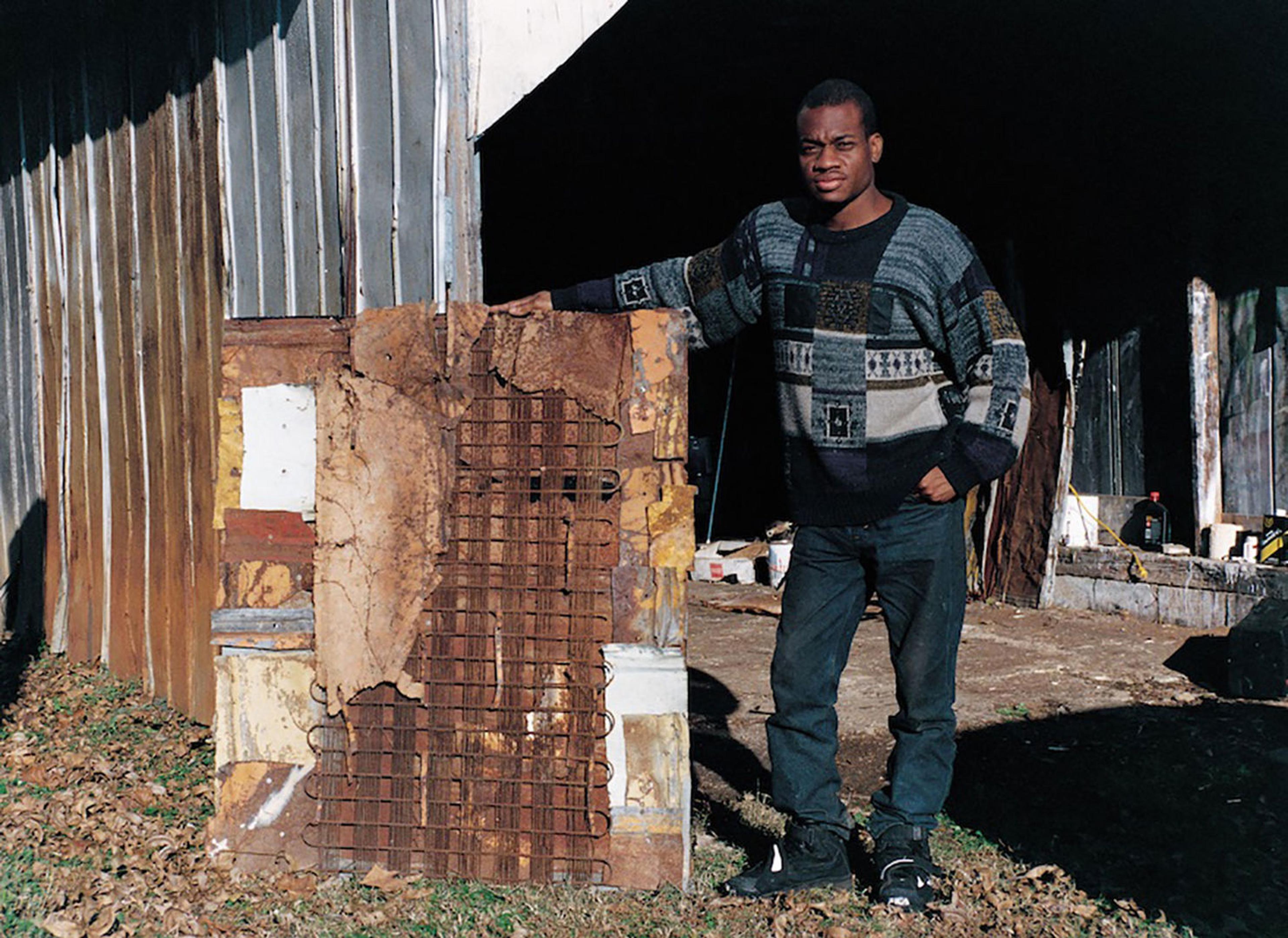
Ronald Lockett pictured with April Nineteenth (The Number) at his Bessemer property, ca. 1995. Photo by William Arnett, courtesy of the Souls Grown Deep Foundation
Thirty-seven years his senior, Lockett's cousin Dial—or "Uncle Buck," as he was also known—served as a surrogate father and, importantly, an artistic mentor for most of Lockett's life. In speaking about his decision to remain in Bessemer, Lockett stated:
I always wanted to do artwork or whatever, but [Dial] was a big inspiration to me . . . kind of, like, a driving force of my artwork. Because I told him I wanted to go to art school and he told me I had the best school of all just making artwork.[2]
The historical hinge of higher education that, in one way, defines Lockett's life, also throws into high relief the question of training with regard to Southern black artists. Lockett is the exception among the Birmingham-Bessemer group in that he was not born under the racial terror of Jim Crow segregation. As a member of this younger generation, Lockett was more able to receive formal schooling than were the elder members of his artistic peer group. Though he declined to pursue higher education, Lockett did choose an education in his own way: he became Dial's mentee and studied art at the local library. Lockett recognized Dial's artistic brilliance and also astutely realized that because of his race, class, and level of schooling, Dial was not the kind of artist one would encounter at an art school—neither in the recently desegregated South, nor in the distant North. Therefore, the "self-taught" moniker does not accurately describe Lockett's artistic career, as it is important to consider the many different avenues through which an artist can be educated.
In the mid-nineties, Lockett adopted two deeply personal elements into his practice. First, he began appropriating sheets of metal that were once owned by Dial or were sourced from Dial's property. As a material, metal offered Lockett rich metaphorical and historical resonance. The men around Lockett spent their lives working in steel and iron factories—as most men did in the town named after English inventor Sir Henry Bessemer, who developed a steelmaking process that revolutionized the industry. Dial, who worked at the Pullman Standard Plant for thirty years, made a number of works that reference the steel industry, including Powder Plant (2014), which likely alludes to the deadly explosions that occurred at a dynamite-powder plant near Bessemer in the 1970s. Dynamite was used in iron-ore mining, and the eventual closure of this plant helped signal the end of industry for the area. The steel industry's collapse in the late 1970s threw the Birmingham-Bessemer region into an economic depression, from which it has yet to recover totally.
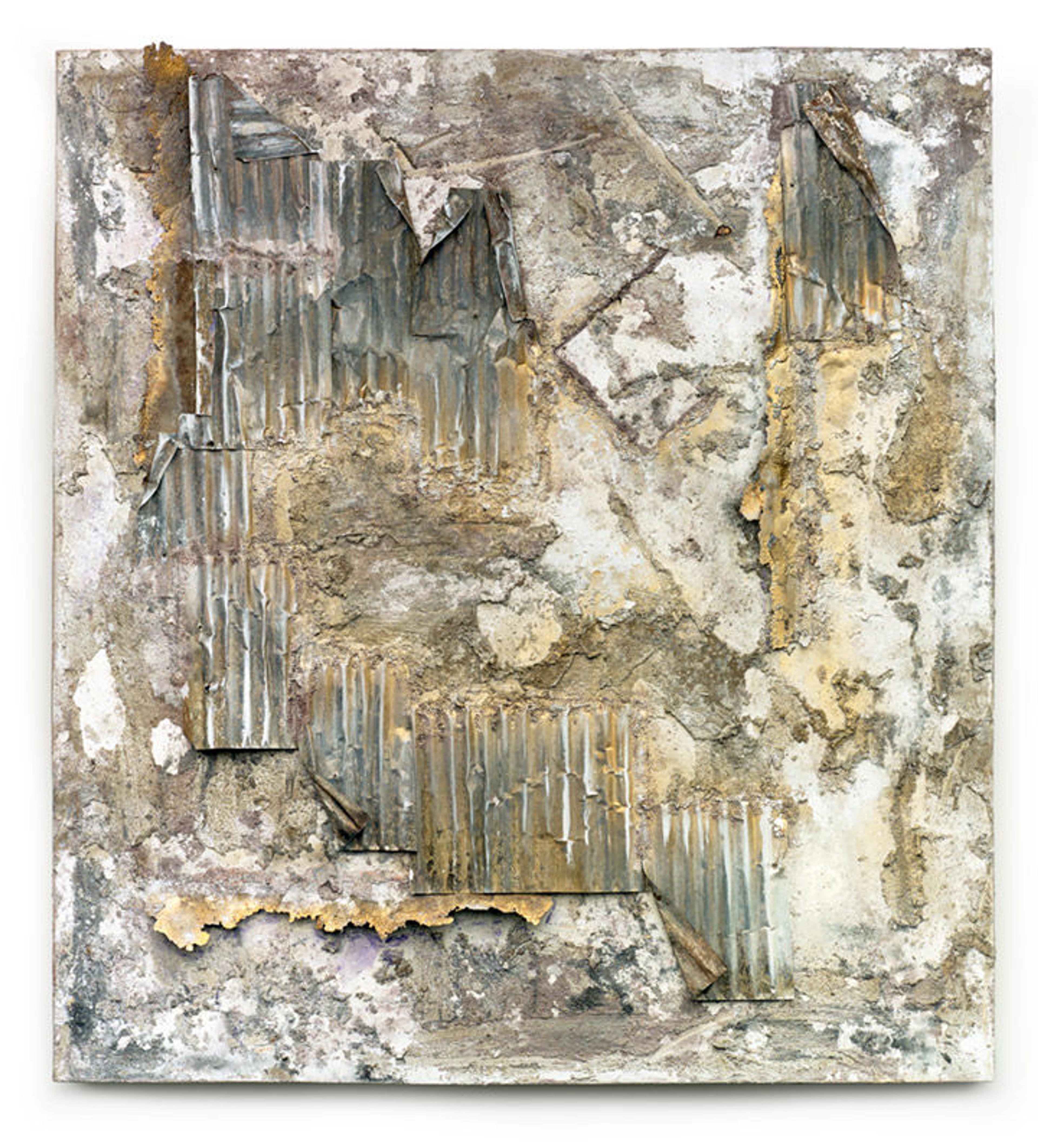
Thornton Dial (American, 1928–2016). Powder Plant, 2013. Sheet metal, sawdust, commercial paint, and adhesive on canvas on wood, 66 x 60 x 3 in. (167.6 x 152.4 x 7.6 cm). The Metropolitan Museum of Art, New York, Gift of Souls Grown Deep Foundation from the William S. Arnett Collection, 2014 (2014.548.3). © Thornton Dial
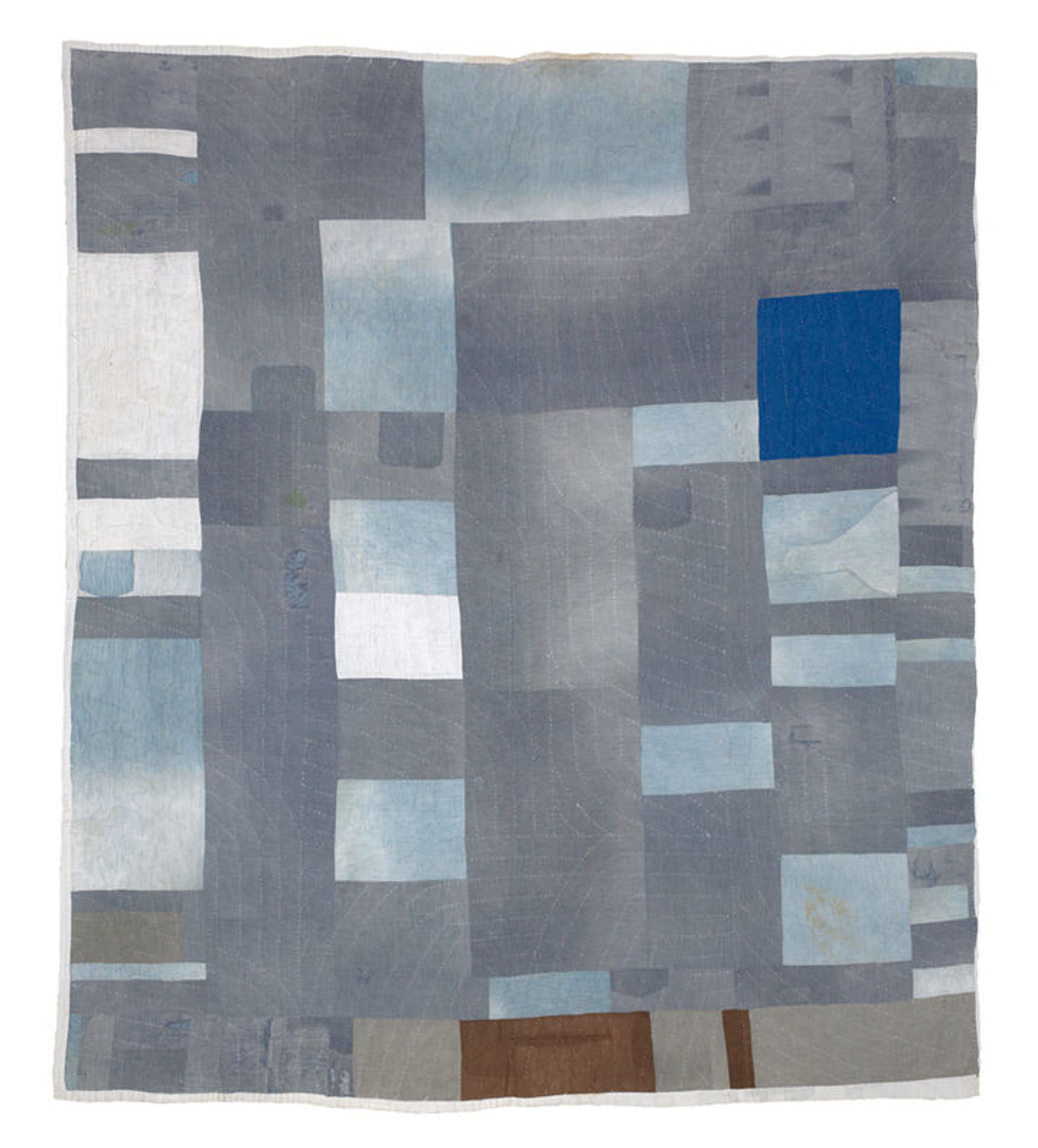
Lucy Mingo (American, b. 1931). Blocks and Strips work-clothes quilt, 1959. Top and back: cotton, 80 5/8 x 69 1/2 in. (204.8 x 176.5 cm). The Metropolitan Museum of Art, New York, Gift of Souls Grown Deep Foundation from the William S. Arnett Collection, 2014 (2014.548.46). © Lucy Mingo
Lockett never worked in the steel industry, in part because there were few jobs left for him when he came of working age. Though he never held employment, he references—and elevates—the economic importance of metal through his ability to transform it into powerful works of art. Metal connected him to previous generations of black laborers within his own family and provided fertile ground for artistic exploration, as can be seen in The Enemy Amongst Us, a work from Lockett's "Oklahoma" series of six pieced-metal assemblages made in response to the 1995 Oklahoma City bombing.
The work's title refers to the fact that the perpetrators of this attack—which killed 168 people and remains the deadliest domestic-terrorist attack in American history—were United States citizens and military veterans. Like all works in this series, it is completely nonrepresentational. Lockett's decision not to represent any figures came from his belief that figuration of such violence would have been insensitive to the victims; instead, he evokes the facades of blasted, bombed-out buildings through abstract metal collage. The pieced-metal squares, with their ragged edges, ask the viewer to imagine a blast powerful enough to rip through a building. In this work, violence is alluded to, rather than explicitly depicted.
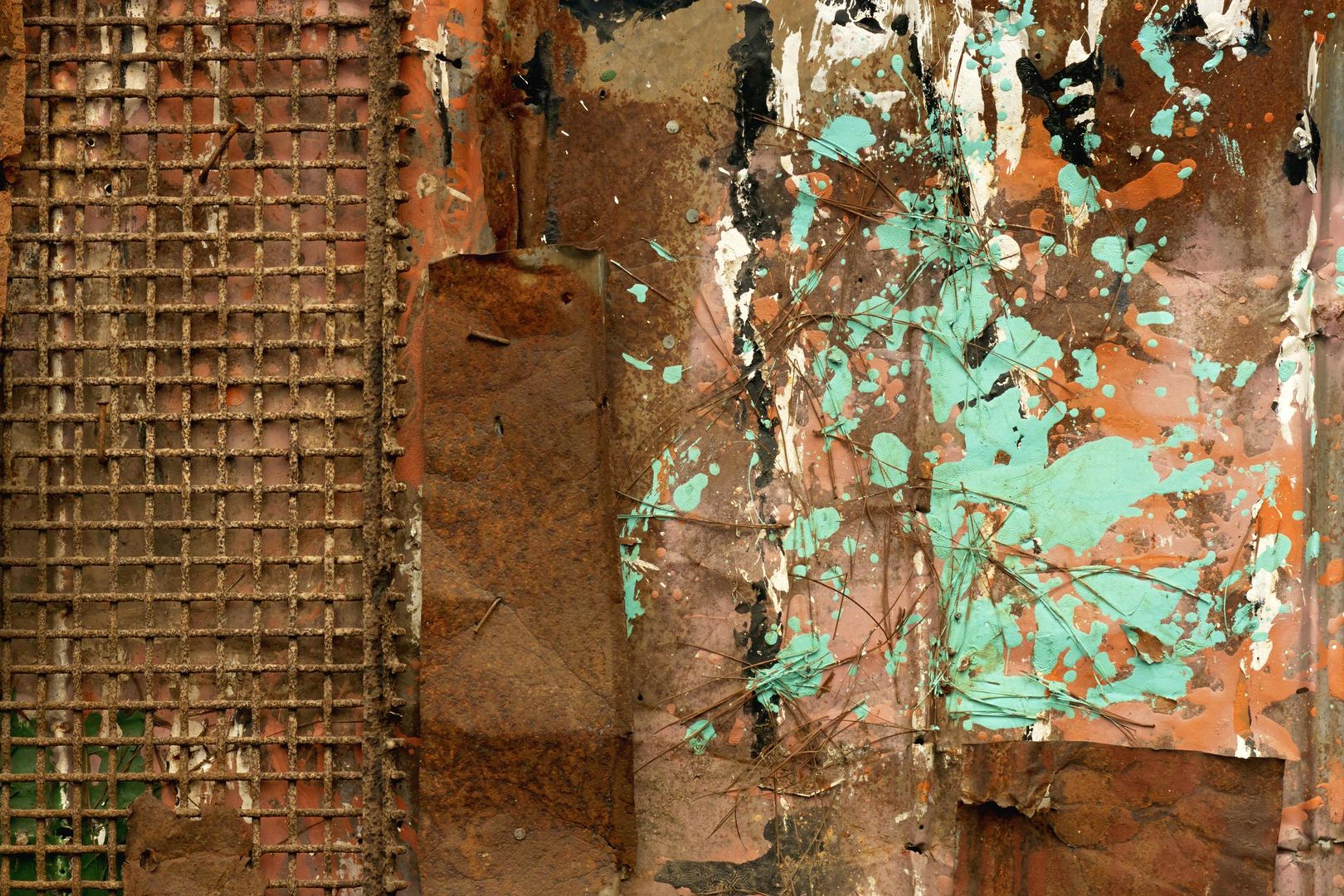
Ronald Lockett's The Enemy Amongst Us (detail)
The metal sheet that composes the top-right panel in Enemy also contains excerpts of Dial's drips and paint splatters. This trace of his mentor's hand was Lockett's subtle form of homage. The way that Lockett arranged these metal panels recalls quilts, serving as a reference to the other major artistic figure in Lockett's life: his great aunt Sarah Dial Lockett. Like many Southern black women of her generation, Sarah Lockett was an avid quilter, and Enemy references the use of quilts as customs of memorial.
The "work-clothes" quilt, most notably from Gee's Bend, Alabama, is a type of quilt constructed from the old clothing (usually denim) of deceased family members. Four exceptional examples of the genre are on display in History Refused to Die, including Lucy Mingo's Blocks and Strips work-clothes quilt (1959). The quilt, an object expressly made to be intimate with the human body, to provide warmth, to envelop us when we are at our most vulnerable—and also, importantly, an object often made as a form of memorial for the dead—is transformed in Lockett's Enemy into a postindustrial, architectural homage to the fallen. In appropriating the quilting tradition with his use of metal, Lockett transmutes a visual medium traditionally practiced by women into a masculine form, thus uniting male and female histories of his family's labor.
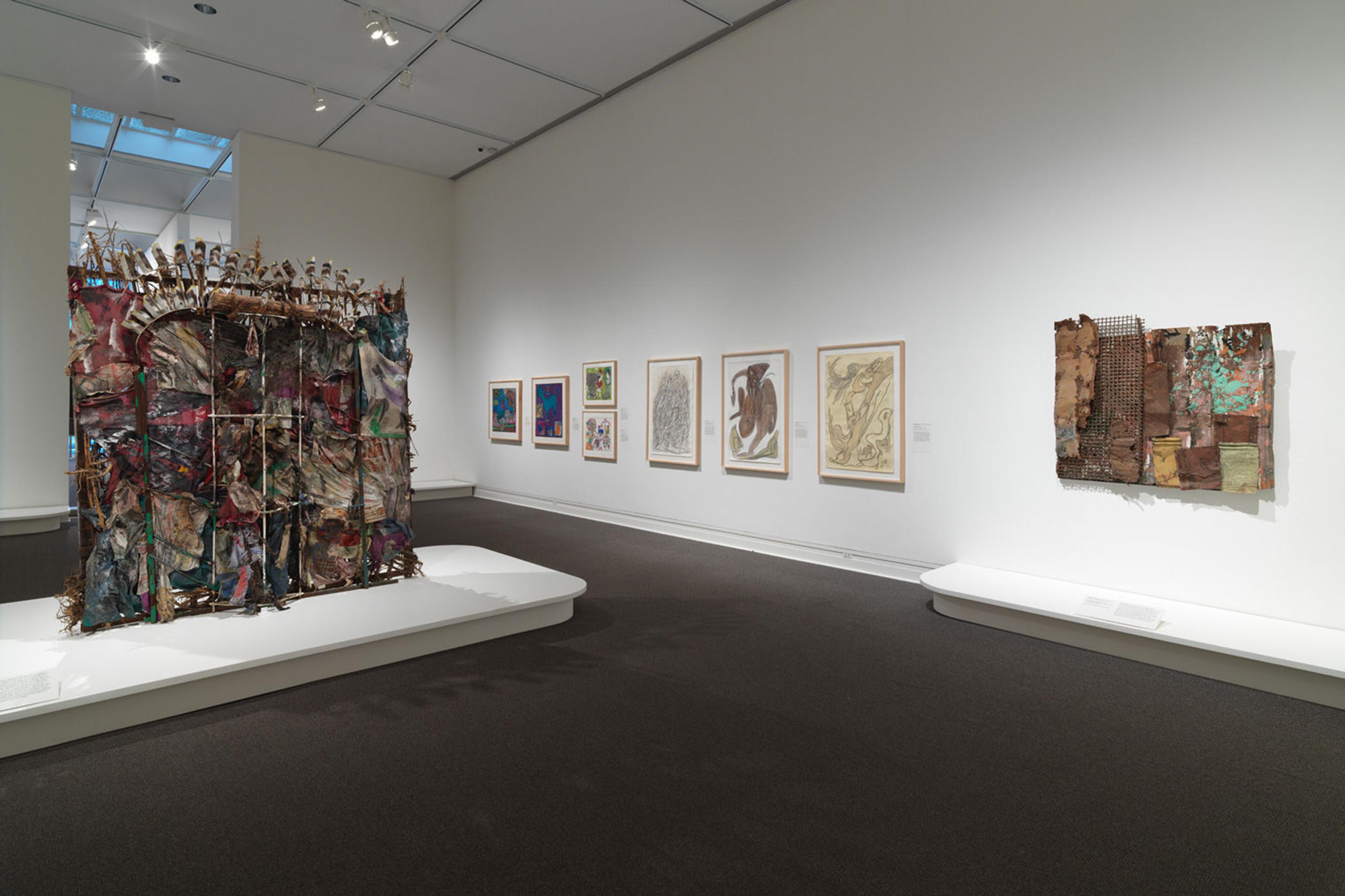
Installation view of History Refused to Die
Lockett's Enemy and the Gee's Bend work-clothes quilts also call to mind what is arguably the most important quilt of the 1980s and 1990s—the AIDS memorial quilt—and the second development to affect Lockett's practice in the mid-nineties: his diagnosis as HIV positive. Like his mentor, Lockett was an avid news consumer. It is highly likely that Lockett knew about the AIDS memorial quilt given the media attention surrounding the project. While the quilt was first unveiled on the National Mall in 1987, its last display in entirety was in October 1996—less than two years before Lockett's death, and after his HIV-positive diagnosis.
While he is not often discussed in this context, Lockett belongs to a generation of artists lost to the AIDS epidemic—Keith Haring, Felix Gonzalez-Torres, and Robert Mapplethorpe, to name a few. Ronald Lockett died from AIDS-related pneumonia in August 1998. He was thirty-two years old. Perhaps it can be said that Lockett also memorialized his own short life in his metal-quilt assemblages.
Notes
[1] For a more complete biography, see Paul Arnett, "Passing the Buck: The Educations of Ronald Lockett," Fever Within: The Art of Ronald Lockett, (Chapel Hill: The University of North Carolina Press, 2016), 61–74.
[2] Videotape 15: Ronald Lockett interview raw footage, 1997, by David Seehausen. Series 2. Video Recordings, circa 1982–2001, in the Souls Grown Deep Foundation Collection #20491, Southern Folklife Collection, The Wilson Library, University of North Carolina at Chapel Hill.
Related Content
History Refused to Die: Highlights from the Souls Grown Deep Foundation Gift is on view at The Met Fifth Avenue through September 23.
The exhibition catalogue, My Soul Has Grown Deep: Black Art from the American South, is available at The Met Store and MetPublications.
Learn more about History Refused to Die in a blog series published in conjunction with the exhibition.
